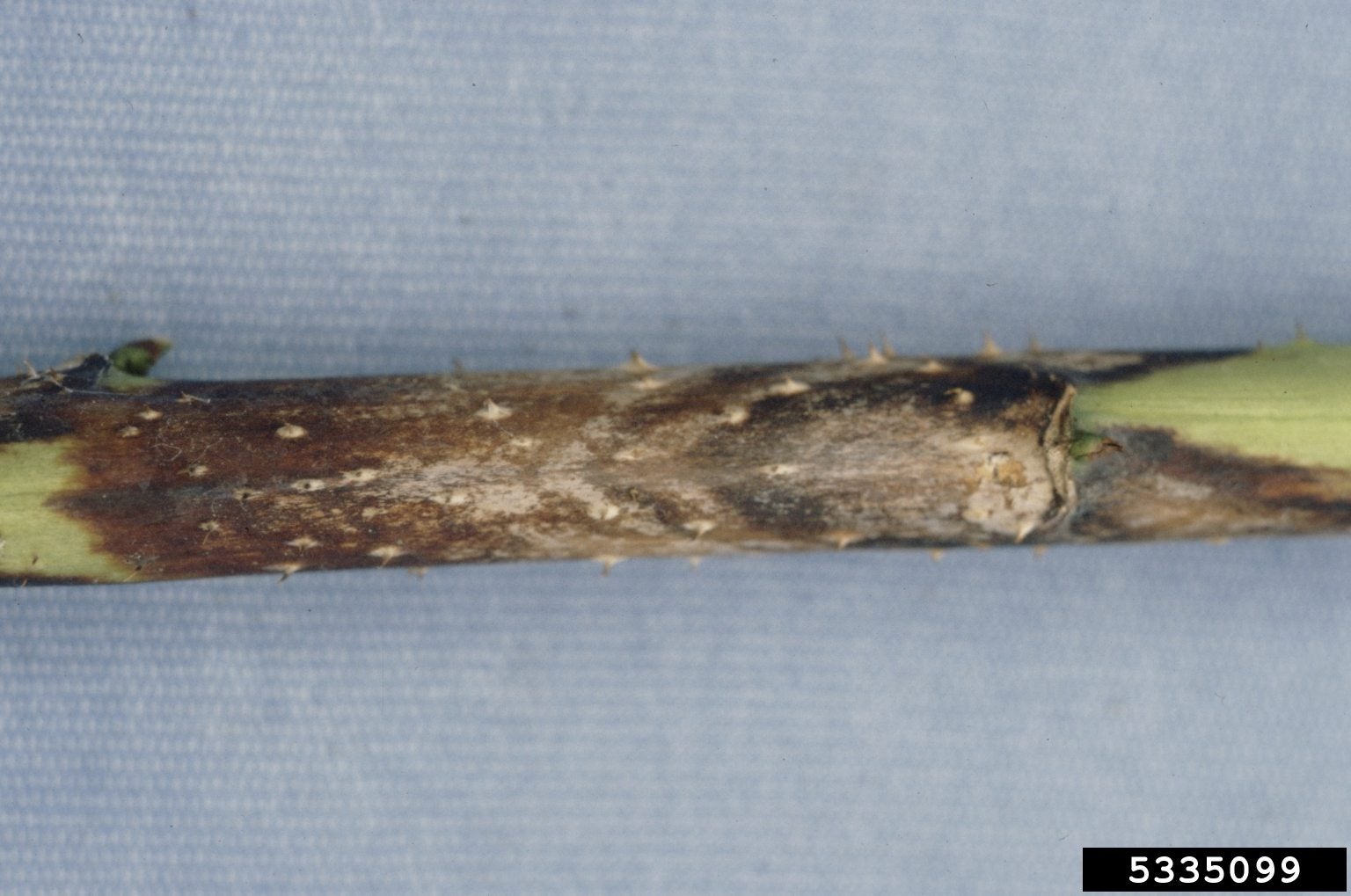Raspberry Plant Problems: Reasons For Raspberry Canes Turning Brown


Isn’t it satisfying to harvest your own raspberries? I love the way a perfectly warm, ripe raspberry rolls off its mount into my fingers. The raspberry aroma is tangy, and the taste of a fresh raspberry is delightfully warm, sweet, and tart! Raspberry plants are worth growing. That being said, there are many diseases of raspberry plants, so it is good to educate yourself about how to grow the delectable raspberry. Canes turning brown are a common symptom of many different diseases of raspberry plants.
Understanding Raspberry Plant Problems
One of the first things you need to know is the difference between a primocane and a floricane. A primocane is a leafy stalk formed during its first year on a raspberry plant. It may produce buds but doesn’t typically produce fruit. You want to let the primocanes grow and then overwinter for producing flowers and fruit in the second year. During the second year of this cane’s life, it is called a floricane. Floricanes produce flowers and fruit. They typically die or become non-productive after that. You should cut floricanes down to ground level after you harvest your berries. Leaving floricanes uncut can lead to unnecessary raspberry plant problems.
Reasons for Raspberry Canes Turning Brown
Raspberry cane diseases that result in browning can be caused by bacteria or fungi. Browning raspberry canes can also be a sign of normal growth. In general, a floricane is not as lush and green looking as a primocane. It becomes a bit woodier and browner in its second year. This is not a problem.
Bacterial problems
Bacterial diseases include fire blight and bacterial blight. Both of these diseases cause significant browning raspberry canes – very dark or burnt-looking stems and leaves are a sure sign. These diseases can ruin fruit production and are favored by moist, wet springs or winters. They need a wound opening or pruning cut to infect the plant. It is best to cut out the infected plant material at least 12 inches (31 cm.) below the diseased area. Destroy the plant material. Do not compost it. Copper sprays applied periodically throughout the season can help protect the plant but will not prevent the disease.
Fungal diseases
Some important fungal diseases that lead to raspberry canes turning brown include spur blight, cane blight, and anthracnose. Look at your primocanes in late summer or early fall before they harden up for winter to see if you have signs of these diseases.
- Anthracnose displays round, sunken, white to tan colored pits in the internodes of the cane or stem (the areas between leaves or smaller branches). These pits often have a purple margin. Anthracnose weakens and cracks the bark and often leads to the death of the cane over the winter.
- Spur blight initiates its disease course in the leaves or at the node where the leaf attaches to the cane (stem). In the leaves, you’ll see yellowing and browning. The leaves will die and drop off leaving the leaf petiole. On the branch stem, you’ll see little ½ inch (1 cm.) purple or brown spots around the nodes. These spots might expand around the entire stem. During the next year, these areas will be non-productive and appear leggy.
- Cane blight is caused by wounds in the stem. The wounds form reddish brown streaks and can eventually girdle the entire cane causing cane death.
All three of these fungal diseases of raspberry plants are spread from cane to cane rather than root to cane. They love moist conditions. The diseases may overwinter on the plant and then spread from floricane to primocane. Splashing water spreads transmits the fungi in all three of these diseases. Wind also spreads the fungi of spur blight. The keys to controlling these diseases are:
- Reduce moisture and humidity in the area
- Keep your rows narrower than 18 inches (46 cm.)
- Remove non-productive floricanes every year
- Don’t prune if you expect rain in the next five days
In severely infected patches, you can mow the whole area down and start over and/or apply an appropriate fungicide. Note that you may be applying poison to an edible crop if you use a fungicide. Check the label carefully. If you are starting from scratch with your raspberry patch, be sure to look for disease-resistant varieties. Make sure your patch gets enough sun and regular water and is amended with compost every year.
Sign up for the Gardening Know How newsletter today and receive a free copy of our e-book "How to Grow Delicious Tomatoes".

Karen Boness is the founder of Wild Willow Design, an Australia-based company that specializes in ecological landscape design.